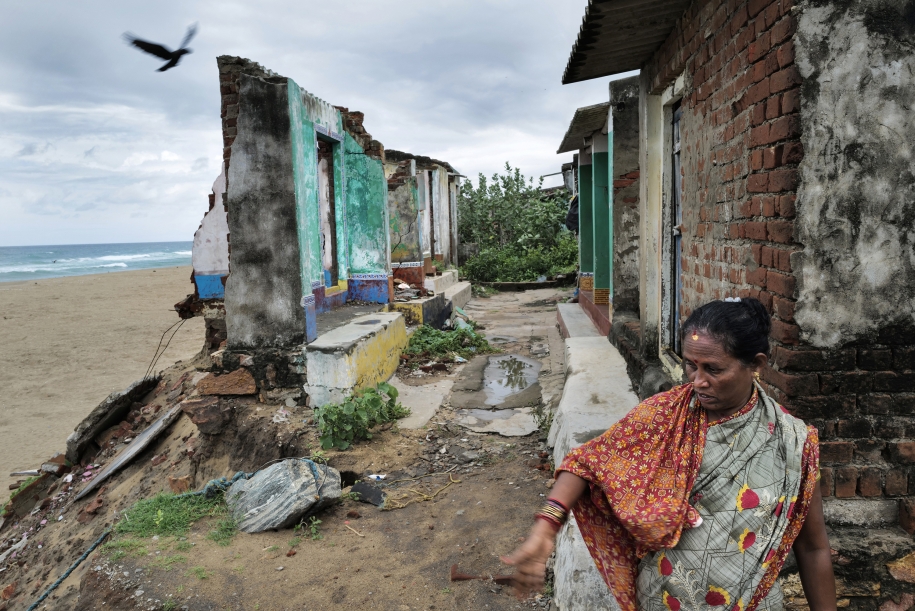

Only two families, including Chandragiri Paindi, remain in the mostly destroyed and deserted fishing village of Podompetta, India. The fishing village, like others along India's Bay of Bengal coastline, has been hammered by cyclones, rising seas and devastating erosion, the evidence of which is obvious along the beachfront. Fish stocks in the Bay of Bengal are plummeting, a result of human induced climate change which is helping accelerate warming temperatures in the world’s oceans.
RISING THREAT: Livelihoods Under Threat Along the Bay of Bengal
Michael Robinson Chávez | India
Photographer: Michael Robinson Chávez
Exhibit Title: RISING THREAT: Livelihoods Under Threat Along the Bay of Bengal
Location: India
Along the Bay of Bengal, where nearly 1.4 billion people live, water has become perilously unpredictable. On the coast of India’s Odisha state, repeated floods swallow villages. In Sri Lanka, a scarcity of water is drying out paddy fields. In the mangrove swamps of the Sundarbans forest rising seas and cyclones are driving people inland, to congested cities like Kolkata for work.
Climate change is warming waters, shifting ocean patterns and transforming the region’s yearly monsoon from a reliable lifeline into a menace.
The water in the bay is rising faster than in other major bodies of water. The challenges confronting nations adjacent to it, densely populated along their coasts, probably foreshadow the struggles ahead elsewhere on Earth.
In Odisha, they found that coastal communities that had relied for generations on fishing were being forced to rethink their livelihoods. In the Indian megatropolis of Kolkata, climate refugees from coastal and island villages have crowded into teeming slums, desperate to find work as laborers. And in Sri Lanka climate change has confounded the monsoons, producing droughts that have ravaged rice paddies and drained reservoirs.
Michael Robinson Chávez
michaelrobinsonchavez@gmail.com
www.chavesphoto.com
Make Comment/View Comments